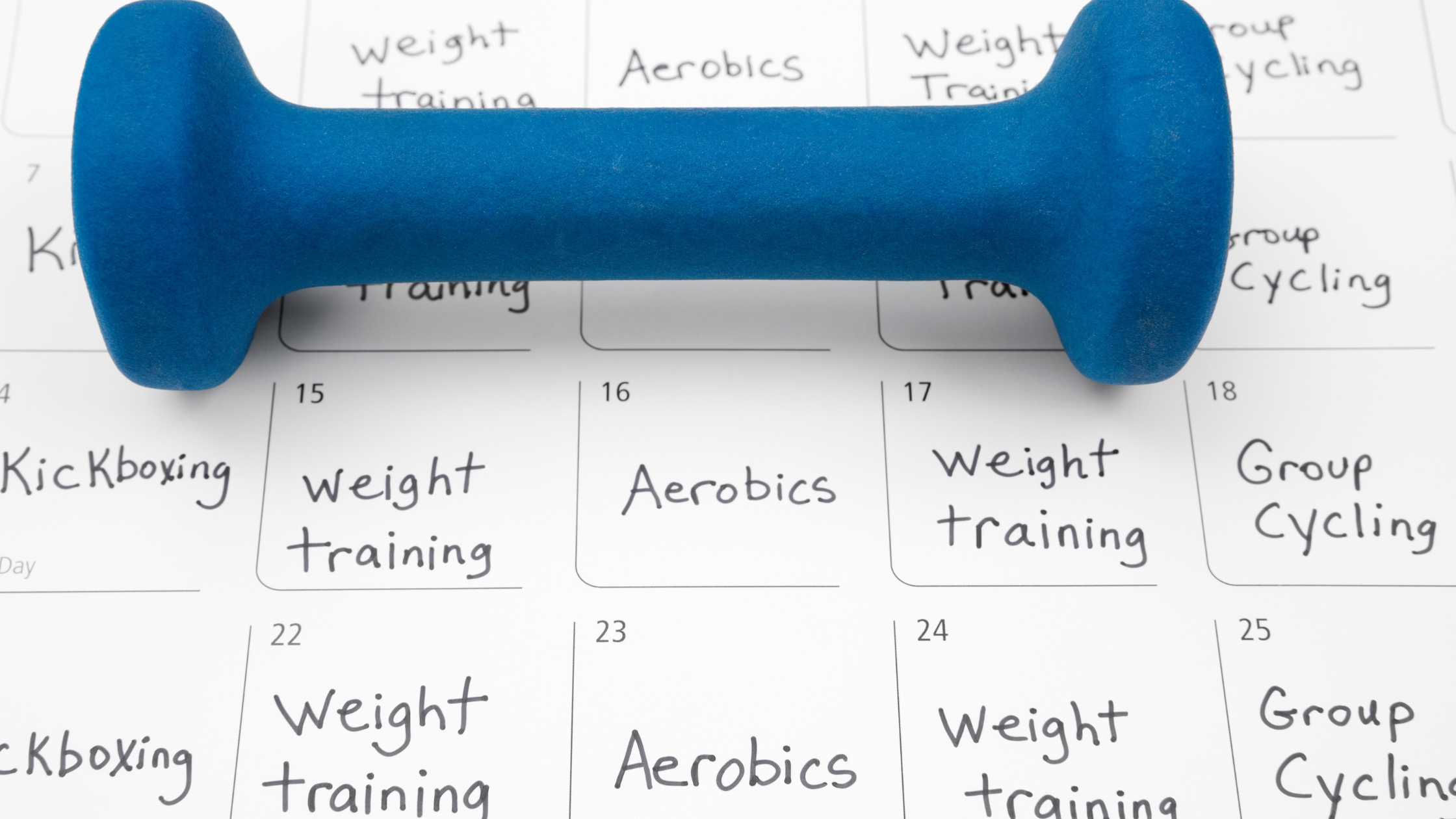Designing a weekly workout schedule for strength training can feel like navigating a maze, especially if you're new to fitness. There are countless articles, routines, and opinions online, which can leave you feeling overwhelmed. But it doesn't have to be complicated. Designing a weekly workout schedule should be a rewarding journey toward building a stronger and healthier you.
Table Of Contents:
- Understanding Strength Training Basics
- Factors to Consider
- Structuring Your Weekly Strength Training Schedule
- Don't Neglect Cardio.
- Prioritize Rest and Recovery
- Adapting and Listening to Your Body
- FAQs about Designing a Weekly Workout Schedule for Strength Training
- Conclusion
Understanding Strength Training Basics
Before you jump into scheduling, it's essential to grasp the fundamentals. Strength training, also known as resistance training, involves using resistance to challenge your muscles. This builds strength, muscle mass, and endurance.
Benefits of Strength Training
Strength training doesn't just sculpt a more toned physique. It offers total-body strength and a myriad of health benefits. These include increased bone density, a reduced risk of injuries, a boosted metabolism, and even improved mental health.
Factors to Consider
Now, let's consider some crucial factors that will influence your workout schedule.
1. Fitness Level
Your fitness level plays a key role. Beginners need to start slowly with less frequent workouts and lighter weights. Gradually progress as you adapt and always consult your doctor or a health coach for personalized advice.
2. Goals
Are you aiming to build muscle mass, increase strength, improve overall fitness, or a combination of these? Each fitness goal demands a different approach to exercise selection, weight intensity, and workout frequency. Determine your fitness goals early to help you build a plan.
3. Available Time
Life gets busy. Be realistic about how much time you can genuinely commit to exercising each week. It's better to have shorter, more focused workouts you can consistently stick to than an elaborate plan that you'll eventually abandon.
4. Recovery
One common misconception is that working out every day leads to faster results. The reality is rest is just as crucial as the workout itself. Muscles need time to repair and grow stronger.
As the Hospital for Special Surgery points out, aim for at least 48 hours of recovery time between working the same muscle groups. Incorporate a rest day into your weekly workout plan for optimal results.
Structuring Your Weekly Strength Training Schedule

Here comes the fun part—building your weekly gym workout schedule. Let's look at a general framework. Feel free to adapt this based on your individual factors we discussed earlier.
Option 1: Full-Body Workouts (2-3 Days a Week)
This is an excellent option for beginners. You'll target all the major muscle groups in each session. This helps build a solid foundation and allows for sufficient rest between workouts.
Sample Full-Body Workout Routine:
- Squats (for legs and glutes).
- Deadlifts (for back and legs).
- Push-ups (for chest, shoulders, and triceps).
- Pull-ups or Inverted Rows (for back and biceps).
Option 2: Upper/Lower Split (4 Days a Week)
As you get more experienced and your fitness improves, you might try an upper/lower split. This divides your weekly gym workout into upper body and lower body days, allowing you to train more frequently while still providing muscle groups adequate recovery. This is a popular weekly workout routine for those looking to build lean muscle.
Sample Upper/Lower Split Routine:
| Day | Focus | Sample Exercises |
|---|---|---|
| Monday | Upper Body | Bench Press, Overhead Press, Barbell Rows, Bicep Curls, Tricep Dips |
| Tuesday | Lower Body | Squats, Deadlifts, Lunges, Hamstring Curls, Calf Raises |
| Wednesday | Rest | |
| Thursday | Upper Body | Repeat Monday's Routine |
| Friday | Lower Body | Repeat Tuesday's Routine |
| Saturday | Rest | |
| Sunday | Rest |
Option 3: Push/Pull/Legs Split (6 Days a Week)
For those who are serious about building muscle and strength, this option allows for a high frequency and volume of training. Here's how it works. 'Push' days focus on exercises like chest presses, shoulder presses, and tricep extensions. 'Pull' days include back exercises like rows, pull-ups, and bicep curls. 'Leg' days obviously focus on compound lifts and leg exercises.
Remember, with a higher frequency, close attention to proper form and adequate rest is vital to prevent injury. The number of training days varies depending on your fitness level.
Don't Neglect Cardio.
Strength training is vital, but don't overlook cardio. Cardio keeps your heart healthy, improves stamina, and helps with weight loss and weight management.
How Much Cardio?
The American College of Sports Medicine suggests a minimum of 150 minutes of moderate-to-intense aerobic activity every week. This can include brisk walking, jogging, cycling, or any activity that raises your heart rate.
Running for about two hours each week, as found by a 2017 study, can positively affect your lifespan and is a good start to building cardio health.
HIIT (High-Intensity Interval Training)
HIIT workouts are an efficient and effective way to improve cardiovascular fitness in a shorter time frame. These short bursts of exercise interspersed with short recovery periods are a great addition to any schedule.
Prioritize Rest and Recovery
You may be surprised by this: your body doesn't build muscle during workouts. It builds muscle while you're resting.
As SELF magazine explains, 'rest days are when your body recovers from exercise and rebuilds those little microtears to come back stronger.'
Rest Days Are Key
Incorporate one to two complete rest days per week where you abstain from any intense physical activity. During these days, focus on gentle activities like walking or stretching to improve blood flow and help with recovery.
Proper sleep, hydration, and nutrition play a critical role in the recovery process as well. Giving your muscles time to recover is just as important as the workout itself. You can even work with a personal trainer who can design a custom workout plan that's right for you.
Adapting and Listening to Your Body
You may not know what kind of split works best until you get going. Don't be afraid to experiment and adjust. Maybe you try the full-body routine for a few weeks and then switch to an upper/lower split to see how your body responds.
Be Flexible
Life happens. If you miss a day or two, don't beat yourself up. Just get back to your schedule when you can. Also, pay attention to your body's signals.
If you're feeling excessive soreness, fatigue, or pain, scale back your workouts and prioritize rest. How the exercise feels is a great indicator if you should increase your activity. If it feels too easy, you may want to increase the weight or resistance to challenge yourself.
FAQs about Designing a Weekly Workout Schedule for Strength Training
How many days per week should I work out?
How many strength training days a week is ultimately your choice, although experts like the American Council on Exercise suggest a minimum of one full day of rest for every 7 to 10 days of exercise.
You should incorporate strength training into your weekly workout routine at least twice a week. New to lifting? Then aim for two to three days of full-body strength training.
How long should each workout be?
Effective workouts don't have to consume your entire day. They can range from 30 minutes to an hour, depending on your intensity and the split you've chosen. As a general rule, a workout should last no longer than one hour.
Should I train every muscle group in each session?
With full-body workouts, you work every muscle group in each session. But if you're following a split routine, like upper/lower or push/pull/legs, you'll focus on specific muscle groups each day. This will allow ample recovery time for each muscle. A single day of rest can make all the difference in injury prevention and overall well-being.
Conclusion
Designing a weekly workout schedule for strength training that fits your lifestyle is crucial for consistency and success. Listen to your body, adapt your schedule, and don't forget to rest. The key is finding a balance between pushing your limits and prioritizing recovery. Additionally, proper nutrition and the right supplements are essential to support your training and overall health. Supplements such as protein powder, creatine, and multivitamins can help maximize your gains and enhance recovery.
If you need personalized guidance or support, consider working with a personal trainer. They can create a tailored workout plan, provide expert advice on supplements and nutrition, and help you stay motivated. With the right plan, balanced nutrition, effective supplements, and professional support, you can enjoy the benefits of a stronger, healthier body for the long haul.


